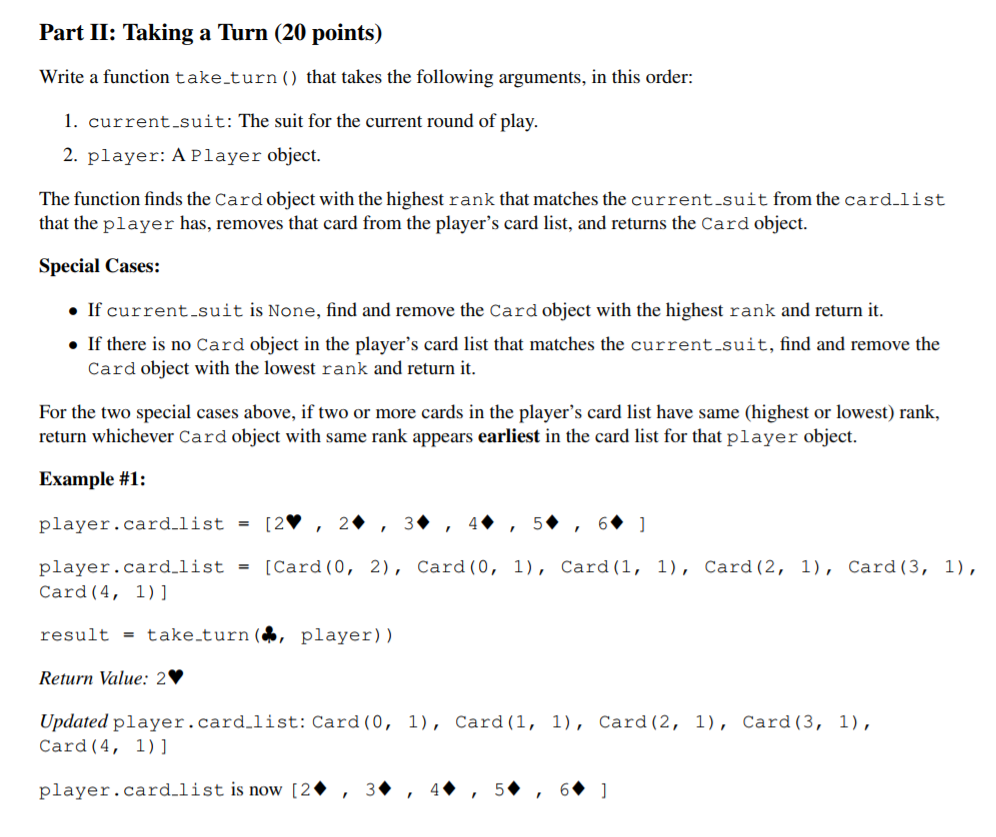Answered step by step
Verified Expert Solution
Question
1 Approved Answer
Python Preliminaries: import random class Card: suit_sym = {0: 'u2663' , 1: 'u2666' , 2: 'u2665' , 3: 'u2660' } rank_sym = {0: '2' ,
Python
Preliminaries:
import random class Card: suit_sym = {0: '\u2663', 1: '\u2666', 2: '\u2665', 3: '\u2660'} rank_sym = {0: '2', 1: '3', 2: '4', 3: '5', 4: '6', 5: '7', 6: '8', 7: '9', 8: '10', 9: 'J', 10: 'Q', 11: 'K', 12: 'A'} def __init__(self, rank, suit): self.rank = rank self.suit = suit def __repr__(self): return self.rank_sym[self.rank] + self.suit_sym[self.suit] def __eq__(self, other): return self.suit == other.suit and self.rank == other.rank class Player: def __init__(self, card_list): self.card_list = card_list self.score = 0 def __repr__(self): return 'cards: ' + str(self.card_list) + ', score: ' + str(self.score) # Utility function to help with testing. Don't change this function. def build_deck(): card_list = [] for i in range(4): for j in range(13): card_list.append(Card(j, i)) return card_list # Utility function to help with testing. Don't change this function. def build_players(): player_list = [] for i in range(4): player = Player([]) player_list.append(player) return player_list 
Step by Step Solution
There are 3 Steps involved in it
Step: 1

Get Instant Access to Expert-Tailored Solutions
See step-by-step solutions with expert insights and AI powered tools for academic success
Step: 2

Step: 3

Ace Your Homework with AI
Get the answers you need in no time with our AI-driven, step-by-step assistance
Get Started


